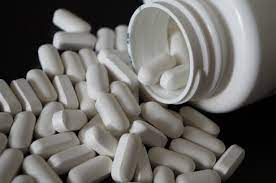Do you have a fear of getting sick or contaminating others? If so, you may be struggling with contamination OCD. This is a type of OCD that is characterized by fears of getting sick or contaminating others. It can be very debilitating and can significantly reduce the quality of life. In this blog post, we will discuss what contamination OCD is, how to get treatment, and how to live a normal life despite your disorder.
Contents
What Is Contamination OCD?

Contamination OCD is an anxiety disorder that causes individuals to feel extreme fear or unease about contamination from dirt, germs, and other pollutants. People with this disorder typically experience obsessions related to the idea of being contaminated and may engage in compulsive behaviors such as excessive handwashing, cleaning, or avoiding contact with certain people or objects they consider “contaminated”.
The fear associated with contamination can be overwhelming, leading to a significant disruption in everyday life. It’s common for individuals affected by this disorder to spend large amounts of time performing rituals and routines involving washing, sanitizing, and cleaning objects and surfaces around them. These behaviors are often done repetitively to reduce the anxiety associated with the fear of contamination.
The impacts can be far-reaching, as individuals may avoid contact with other people or be unable to work or attend school due to their obsessions and compulsions. It’s important for anyone affected by Contamination OCD to seek treatment to reduce the symptoms and improve their quality of life.
Treatment for Contamination OCD
Treating this disorder starts with understanding it. There are a lot of methods to treat contamination OCD, and the best one will depend on the individual’s specific needs. Generally, treatments can be divided into two major categories: psychotherapy and medication.
Psychotherapeutic Treatment
Psychotherapeutic treatment is a type of psychological counseling used to help individuals recognize, manage, and cope with their anxieties related to contamination OCD. This type of therapy typically involves Cognitive Behavioral Therapy (CBT) or Exposure Response Prevention (ERP). CBT helps people understand how their thoughts are impacting their behavior and guides them in changing these thoughts to less stressful and more productive ones. ERP focuses on gradually exposing the person to the things that trigger their anxiety while teaching techniques for managing the fear associated with it. Both approaches can be highly effective in helping people break the cycle of contamination OCD and reduce symptoms.
Medication

Another option for treatment is medication. Antidepressants, such as selective serotonin reuptake inhibitors (SSRIs), are often prescribed to help reduce the symptoms of anxiety and depression that are associated with contamination OCD. Other medications, such as antipsychotics, can also be used to treat this condition. It is important to speak with a doctor or mental health professional to determine which type of medication may be best for the individual’s needs.
Some of the medications that may be prescribed to treat contamination OCD include Prozac, Zoloft, Paxil, Lexapro, Luvox, and Anafranil. These medications can help reduce the symptoms of anxiety associated with contamination OCD and can also improve mood.
Support Groups
In addition to psychotherapy and medication, support groups may also help treat contamination OCD. Support groups are a safe place where individuals can talk openly about their fears and anxieties related to this disorder. They provide an opportunity for people to connect with others who have similar struggles and share tips on how to cope with the condition. Additionally, such groups offer a forum for education about the disorder and how it affects people’s lives. Also, family and friends can provide emotional support to individuals dealing with contamination OCD.
Online resources can also help provide information and support. Information about OCD treatment centers, therapists, and psychologists who specialize in treating this disorder can be found online. Additionally, there are websites and forums dedicated to contamination OCD that provide advice and strategies for managing the condition.
Lifestyle Changes

An individual dealing with contamination OCD may also need to make lifestyle changes to manage the stress and anxiety associated with this condition. Regular exercise, proper nutrition, adequate sleep, relaxation techniques such as meditation or yoga, and regular doctor’s visits can all help reduce symptoms of this disorder. Additionally, individuals should try to avoid triggers that cause their anxieties around contamination.
Some of the life style changes that an individual dealing with contamination OCD may need to make include:
Eating Healthy Food
When individuals are under stress, their appetite can be affected. Eating nutritious meals and snacks throughout the day can help give the body and mind the energy to cope with anxiety. Some of the best foods to eat include whole grains, fruits, vegetables, lean proteins, and healthy fats. It is important to avoid foods high in sugar or processed ingredients.
Exercise
Regular physical activity can help reduce stress and manage the symptoms of contamination OCD. Exercise releases endorphins, hormones that improve mood and make people feel better mentally. Getting enough movement throughout the day can also help individuals sleep better at night.
Managing Stress
People with contamination OCD need to learn how to manage their stress levels so that anxiety does not become overwhelming. Taking regular breaks during the day and engaging in relaxation activities such as yoga or meditation can help reduce stress levels and give individuals more control over their thoughts and emotions. Additionally, sticking to a regular sleep schedule and engaging in activities that bring joy can help manage symptoms.
Trying Meditation
Meeting with a mental health professional and trying cognitive behavioral therapy are two of the most common treatments for contamination OCD. However, individuals can also find relief from this condition through meditation. Meditation is a type of relaxation technique that has been proven to reduce anxiety levels, improve concentration, and help individuals gain control over their thoughts and emotions.
Finding Help
Individuals who are struggling with contamination OCD should seek help from a mental health professional. A therapist or psychologist can provide support and guidance in managing symptoms. They can also recommend medications or other treatments if needed. Additionally, there are many online resources available to those dealing with this disorder so they can get information about treatment options and connect with others who have similar experiences. It is important to remember that treatment is possible and there are ways to manage the symptoms of contamination OCD. With help and support, individuals can find relief from this condition and lead healthier lives.
Doing Yoga
When dealing with contamination OCD, individuals may need to find ways to relax and release tension. One of the best ways to manage anxiety is through yoga. Yoga promotes relaxation by combining physical activity with breathing techniques and meditation. Doing yoga can help reduce stress levels and provide relief from the symptoms of this disorder. Additionally, it can be done in the comfort of one’s own home or at a local yoga studio.
Using Vizualisation Techniques
An effective way to manage the symptoms of contamination OCD is through visualization techniques. Visualization involves imagining a scene or situation in which one feels relaxed and at peace. For example, an individual might imagine a peaceful beach while focusing on their breathing and letting go of any anxious thoughts. This can be done with the help of a mental health professional, or simply by finding guided relaxation exercises online. Doing this regularly can help reduce feelings of anxiety and improve overall well-being.
Talking About It
It is important for individuals dealing with contamination OCD to talk openly about their condition with family and friends. Talking about it can help people feel less alone, as well as provide support when things seem overwhelming. Additionally, talking to others can give individuals access to resources that may be able to help, such as support groups and online forums.
These are some of the treatments and strategies that can help individuals manage the symptoms of contamination OCD. Though there is no “cure” for this condition, it can be managed with the right treatment plan and support system in place.
Conclusion
Individuals should remember that there is hope for recovery. With the right treatment and support, individuals can learn to manage their symptoms and lead happier healthier lives.
With patience and persistence, it is possible to overcome contamination OCD. Seeking help from a mental health professional, combined with proper self-care, can make a big difference in managing this disorder. Furthermore, connecting with others who are going through similar experiences can provide comfort and understanding. With time and dedication, individuals can find relief from the symptoms of contamination OCD and live fulfilling lives.
For more information and guidance, please contact OCDMantra. OCD is a mental health disorder characterized by obsessions and compulsions. If you have any queries regarding OCD treatment, ERP therapy experienced therapists at OCDMantra can help: Book a trial OD therapy session.


